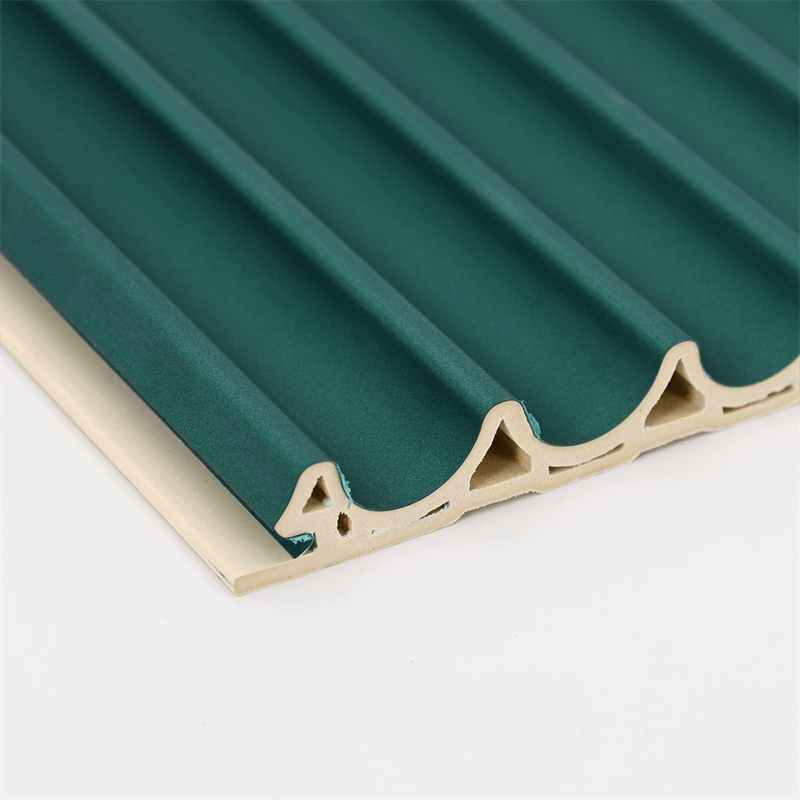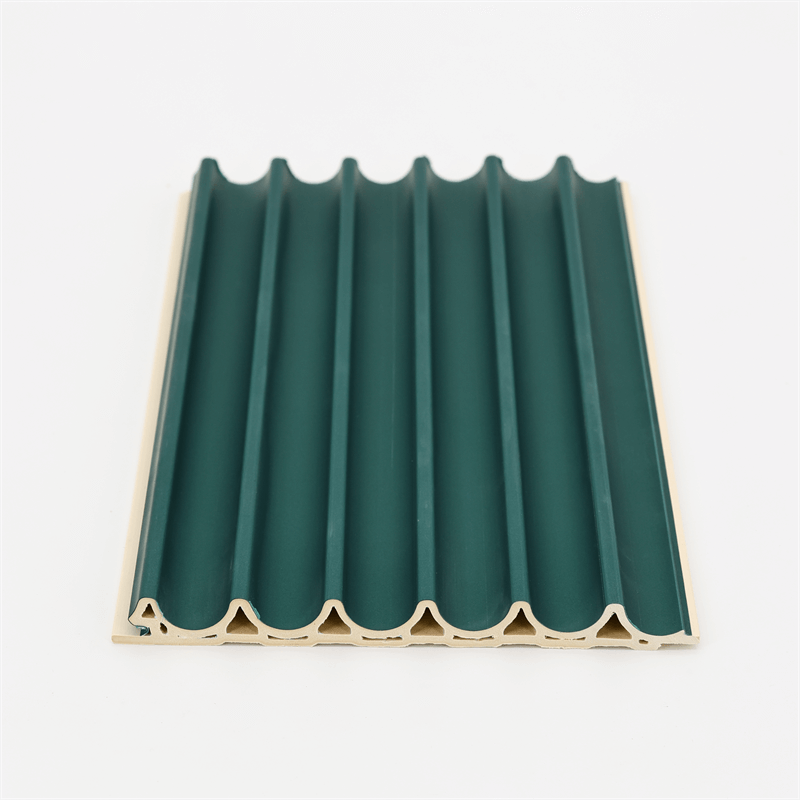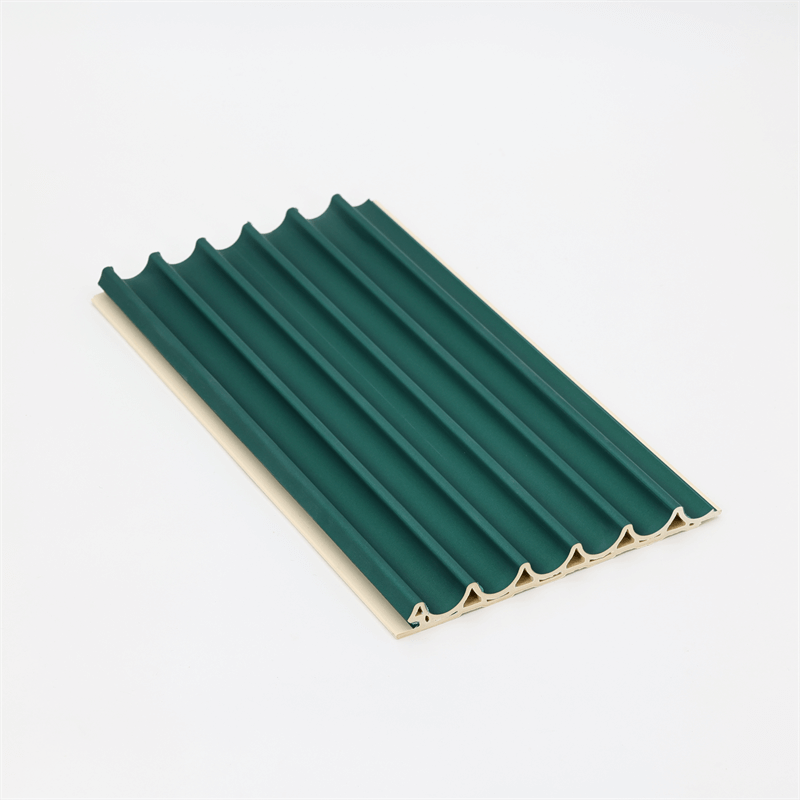Interior design plays a crucial role in creating visually appealing and harmonious spaces that evoke emotions and enhance the overall ambiance.
In recent years, WPC (Wood-Plastic Composite) wall panels have emerged as a popular choice among designers and homeowners due to their aesthetic appeal and versatility.
This essay delves into the beauty of WPC wall panels, exploring their design possibilities, texture and color options, compatibility with various interior styles, and their ability to create unique focal points.
I. Design Possibilities with WPC Wall Panels
WPC wall panels offer a wide range of design possibilities, allowing designers and homeowners to create spaces that reflect their personal style and vision.
Textures and Patterns: WPC wall panels come in an array of textures, ranging from smooth to textured surfaces that mimic the look and feel of natural materials such as wood or stone.
These textures add depth and visual interest to the walls, creating a captivating backdrop for interior design.
Customizable Sizes and Shapes: WPC panels can be customized to fit specific design requirements.
They can be cut into various sizes and shapes, allowing for the creation of unique patterns or arrangements on the walls.
This flexibility empowers designers to experiment and bring their creative ideas to life.
Seamless Integration: WPC wall panels can be seamlessly integrated into various architectural elements, such as columns, recessed wall sections, or feature walls.
This integration adds dimension and character to the space, transforming it into a visually stunning environment.
II. Texture and Color Options
WPC wall panels offer a wide range of texture and color options, enabling designers to achieve the desired aesthetic effect and complement the overall design scheme.
Natural Wood-like Finishes: One of the key advantages of WPC wall panels is their ability to replicate the natural look and texture of wood.
They offer a diverse range of wood finishes, including oak, teak, walnut, and more, allowing for the creation of warm and inviting spaces that exude natural beauty.
Contemporary and Modern Finishes: WPC wall panels also offer contemporary finishes, such as sleek and smooth surfaces, matte or glossy finishes, or metallic accents.
These finishes are ideal for creating a modern and sophisticated atmosphere, adding a touch of elegance to any interior.
Vibrant Colors and Patterns: WPC panels are available in a wide spectrum of colors, ranging from neutral tones to bold and vibrant hues.
Additionally, they can be produced with intricate patterns or designs, enabling designers to incorporate unique visual elements into their projects.
This versatility in color and pattern options allows for endless design possibilities, catering to various design preferences and styles.
III. Compatibility with Interior Styles
WPC wall panels are highly versatile and can seamlessly integrate with different interior styles, enhancing their beauty and aesthetic appeal.
Contemporary and Minimalistic Design: The sleek and clean lines of WPC wall panels make them well-suited for contemporary and minimalistic design styles.
The smooth finishes and neutral color palette create a sense of simplicity and sophistication, allowing other design elements to take center stage.
Rustic and Natural Design: WPC panels that mimic the texture and appearance of natural wood are an excellent choice for creating rustic or nature-inspired interiors.
They add warmth and texture to the space, evoking a cozy and inviting ambiance.
Eclectic and Bohemian Design: The wide range of colors, patterns, and finishes available in WPC wall panels make them perfect for eclectic and bohemian design styles.
Designers can mix and match different panel designs, creating a visually dynamic and vibrant space that reflects the free-spirited and artistic nature of these styles.
IV. Creating Unique Focal Points
WPC wall panels can serve as unique focal points in interior design, drawing attention and adding a touch of drama to the space.
Feature Walls: WPC wall panels can be used to create striking feature walls that instantly capture attention.
By selecting a different color, texture, or pattern for a specific wall, designers can create a focal point that becomes the centerpiece of the room.
Vertical Accents: Incorporating WPC panels in vertical accents, such as columns or alcoves, can create a sense of grandeur and architectural interest.
These vertical elements serve as artistic focal points that elevate the overall design aesthetic.
Artistic Installations: WPC wall panels can be arranged in creative and unconventional ways, forming artistic installations on the walls.
By playing with different panel sizes, shapes, and orientations, designers can create visually captivating and unique designs that serve as conversation starters.
WPC wall panels offer a multitude of design possibilities, textures and color options, compatibility with various interior styles, and the ability to create unique focal points.
Whether it is achieving a contemporary and minimalistic look, embracing the rustic charm of natural wood, or exploring eclectic and bohemian aesthetics, WPC panels can be tailored to meet the design vision of any space. Their versatility, combined with their aesthetic appeal, makes them a preferred choice for designers and homeowners seeking to enhance interior design and create visually stunning environments.
With WPC wall panels, spaces can be transformed into captivating works of art that reflect personal style, evoke emotions, and leave a lasting impression on all who experience them.
Furthermore, the beauty of WPC wall panels extends beyond their visual appeal. These panels can also contribute to the overall atmosphere and ambiance of a space.
For instance, the use of panels with natural wood finishes can create a warm and inviting atmosphere, perfect for creating cozy living spaces or intimate dining areas.
On the other hand, sleek and contemporary finishes can give a space a sense of sophistication and elegance, ideal for modern and upscale settings.
In addition to their aesthetic value, WPC wall panels offer practical benefits that enhance interior design. One of these benefits is their ability to improve acoustic performance.
The dense composition of WPC panels helps to absorb and reduce sound transmission, creating a quieter and more comfortable environment.
This is particularly advantageous in spaces such as offices, restaurants, or residential areas where noise reduction is crucial for productivity, relaxation, or privacy.

Moreover, the installation of WPC wall panels is relatively straightforward, making them an attractive option for both designers and contractors.
The panels can be easily mounted onto walls using a variety of installation methods, such as adhesive or concealed fasteners.
This ease of installation saves time and labor costs, allowing for efficient project completion without compromising on the visual impact of the design.
Another notable advantage of WPC wall panels is their low maintenance requirements.
Unlike natural wood, which may require regular staining, sealing, or refinishing, WPC panels are resistant to fading, staining, and warping.
They are also easy to clean, requiring only a gentle wipe down with mild soap and water to maintain their pristine appearance.
This low maintenance characteristic not only saves time and effort but also ensures that the panels retain their beauty and functionality for an extended period.
Furthermore, WPC wall panels can be combined with other design elements to create a cohesive and harmonious space.
They can be paired with various flooring options, such as hardwood, laminate, or tiles, to create a seamless transition between vertical and horizontal surfaces.
Additionally, they can be complemented with a wide range of decorative elements, such as lighting fixtures, furniture, or artwork, to enhance the overall design concept.
In conclusion, WPC wall panels offer numerous advantages in terms of enhancing interior design.
Their design possibilities, texture and color options, compatibility with various interior styles, and ability to create unique focal points make them a versatile and attractive choice for designers and homeowners.
Additionally, their practical benefits, such as improved acoustic performance, ease of installation, and low maintenance requirements, further contribute to their appeal.
By incorporating WPC wall panels into interior design projects, designers can elevate the aesthetic appeal, create visually stunning spaces, and provide a comfortable and enjoyable environment for occupants.
With their combination of beauty, functionality, and versatility, WPC wall panels have become a favored option in the realm of interior design.


